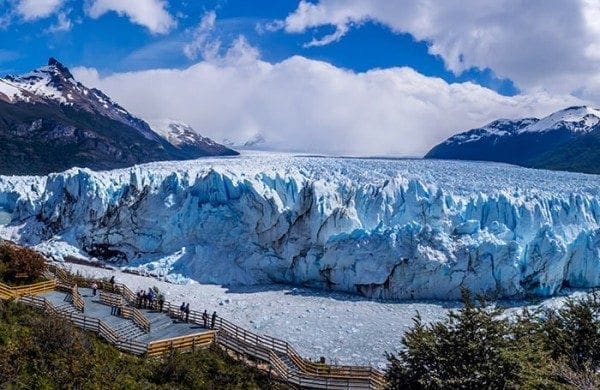For those considering studying Spanish in Argentina, there are destinations rich in cultural and natural beauty that shouldn’t be missed.
When traveling to a country to learn the local language, picking up the language is just the first step. Expanding your horizons by experiencing a different culture and other ways of living and thinking is as, if not more, important than learning the language. If you are learning Spanish, then you definitely have no shortage of choices for places to learn, as there are many Spanish speaking countries throughout the world. But learning Spanish in Argentina will give you the opportunity to visit some of the most beautiful places to be found anywhere in the world.
Among all of the Spanish speaking countries, Argentina is one of the most diverse and culturally rich. Spanning from the tropical northern border with Brazil, Paraguay and Bolivia, to the Arctic southern regions, only a boat ride away from Antarctica, you can find almost any type of natural wonders and social activities that you can think of.
Buenos Aires is situated roughly halfway between the northern and southern boundaries of the long, slender country of Argentina. While the capital city is a fantastically vibrant place in and of itself, its location is what really makes it the perfect base for all your travels throughout Argentina. With only a few exceptions, there are no direct means of transportation between Argentina’s other cities. In most cases, all buses and planes in the country pass through Buenos Aires.
Argentina is such a big country that the best way to travel in it is to organize your travels by territory. Those who are learning Spanish in Argentina can take advantage of this sort of organization and break up their studies with trips to these various regions. Here are the highlights of some of the most popular destinations to visit in Argentina, organized by territory.
NORTHEASTERN ARGENTINA
Puerto Iguazú
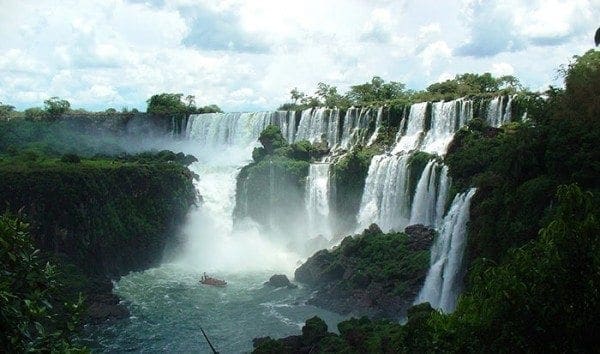

Puerto Iguazú is home to the famous Iguazu Falls, in the province of Misiones. In 2011, Iguazu Falls was one of the sites chosen by more than 100 million voters as one of the New 7 Wonders of Nature. The falls are one of the largest in the world, and thanks to the subtropical rainforest environment they are located in, you will find many rare species of flora and fauna in the area.
Tips: You can easily make this a weekend trip, even if you take the 17-hour overnight bus ride. We suggest that you arrive on Saturday morning and spend the day visiting either the Argentine or Brazilian side of the falls. Then, stay the night and on Sunday visit the other side of the falls. Then leave on one of the overnight buses that arrive back in Buenos Aires on Monday morning. If you don’t have a lot of time, or you want to have as much time as possible to explore the area, you can travel by plane, which is about 2 hours each way.
Iberá Wetland
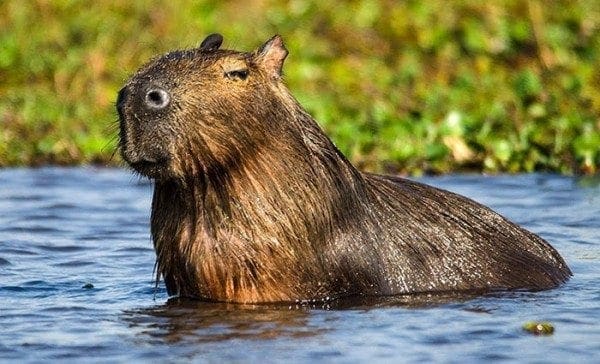

The Iberá Wetland is the second biggest wetland reserve in the world. Since the area is still very much unspoiled, this ecosystem is home to an amazing variety of birds, animals, insects and plants. This natural variety makes it one of the best places to observe and see unique wildlife up close in South America.
Tips: Since the wetland is made up of many lakes, swamps, and lagoons, the best way to explore the area is by boat. There are many boat trips that you can hire, and they will get you very close to the area’s inhabitants undisturbed.
NORTHWESTERN ARGENTINA
Salta Province
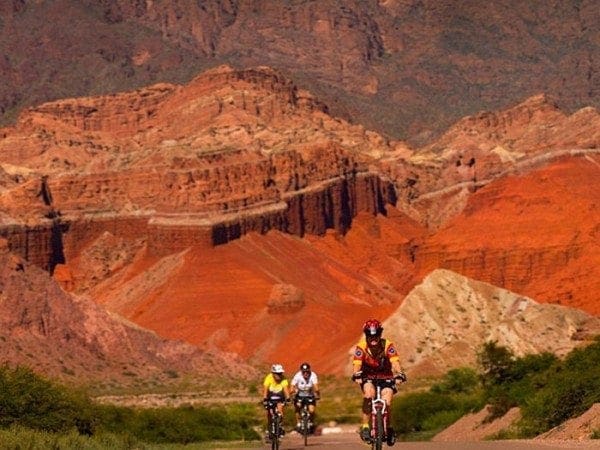

The Salta Province is an area known for its salt lakes and rock formations. You can join group excursions, or rent a car and travel some of the many scenic routes through the province’s mountains and deserts. On the way you can stop and visit the many charming small towns that are situated in the valleys surrounded by the Andes Mountains. The more popular ciudades like Cachi and Cafayate are just a few hours’ bus ride from the city of Salta, which is known for its wineries.
Tips: Northern Argentina is renowned for its wealth of historical folk music, and Salta is no exception. A common local activity is going to la peña, an establishment where you eat traditional northern Argentine cuisine, while listening and dancing to live folk music. We strongly recommend paying a visit to one of la peñas and soaking up the local culture.
Jujuy Province


The Jujuy Province is directly adjacent to the northern border of Argentina, where the country meets Bolivia. It is an area where the indigenous culture is still strongly preserved. The must-visit destination in the area is no doubt the UNESCO World Heritage Site Quebrada de Humahuaca, a narrow valley situated on the northern side of Jujuy. In addition to its natural stunning colorful rockscapes, the UNESCO site has been identified as an important trade and communication passage from the high Andean land to the southern plains dating back as far as 10,000 years ago. You will find historical churches, ruins and archeological museums to visit. If you long to see unsurpassed natural scenery, or your passion is human history and culture, then you mustn’t miss this region.
Tips: If you have a flexible schedule, try to time your visit to Jujuy to catch their Carnaval de la Quebrada in late February and early March. The week-long festivities, which feature a unique merging of indigenous traditions and European rituals introduced by the Spanish conquerors, celebrate the fertility of Mother Earth. The ritual starts with the unearthing of the “devil” (played by a man dressed up in traditional costume), who then leads the participants dancing and singing down the hills and through the towns below. After a week of eating, drinking, and partying, the celebration ends with the reburial of the devil, where he’ll slumber until it’s time to be reawakened again in another year.
CENTRAL ARGENTINA
Córdoba


Despite being the 2nd largest city in Argentina, Córdoba is known for its laid back vibe. This likely stems from the fact that it is home to seven universities, whose large student population foster a lively nightlife and active cultural scene. To the west of the city are the Sierras de Córdoba, which are a hiking haven for outdoor lovers.
Córdoba also has a rich cultural history, as it is where the Jesuits first settled when they came to Argentina. The Jesuits left behind many examples of beautiful architecture and estancias (ranches) of high historical value, all in an excellent state of preservation. The area’s five Jesuit missions, which can all be easily accessed from the city, are listed as UNESCO Heritage sites, and are definitely worth a visit.
Tips: In 1940, the seamen aboard a German battleship scuttled the vessel off the coast of Montevideo, and settled in the village of Villa General Belgrano. In honor of the village’s German heritage, an Oktoberfest celebration takes place there during the first two weeks of October, when Oktoberfest is celebrated throughout much of Europe.
WESTERN ARGENTINA
Mendoza


For wine connoisseurs, no introduction is needed for the famous wine region of Mendoza, which is responsible for almost 70% of the wine production in Argentina. The region’s good wine is also accompanied by a great gastronomic culture in Mendoza. Be sure to tour the local wineries and restaurants by bicycle, bus, or privately hired car.
Given that the city is right on the edge of the Andes, there is plenty to do for those who crave more strenuous activity as well. There are tons of outdoor activities to choose from, including trekking, mountain climbing, paragliding, water rafting, and skiing.
Tips: Cerro Aconcagua is the tallest mountain in the Americas, and is just a couple hours away from Mendoza. It’s a must-visit, especially if you enjoy outdoor adventures. There are a few different routes of various difficulties up to the top. The easiest climb is the “Normal Route” approaching from the north. No matter which route you take, it is strongly advised that you 1) never climb alone, 2) have some high altitude experience and 3) never underestimate the mountain. If hiking is not your cup of tea, you can admire the view from the mountain’s base in the Parque Provincial Aconcagua.
EASTERN ARGENTINA
La Costa
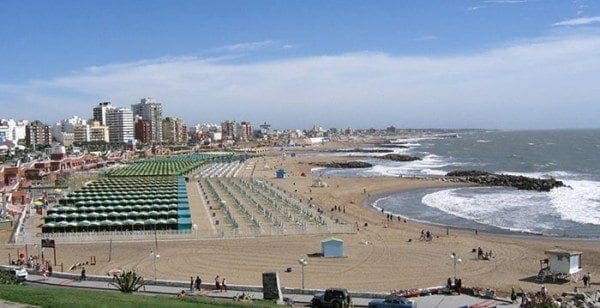

La Costa is the strip of Atlantic Coast running from San Clemente del Tuyú, down to Necochea. Dotted all along this stretch are many beach resort towns and cities where local Argentines go to escape the heat during the summer months. The largest coastal city and the most popular beach destination is Mar del Plata, which is about 5 hours by car from Buenos Aires. The second most popular destination is Pinamar, halfway between Mar del Plata and Buenos Aires. If you want to lounge on a beach without sacrificing the pleasures of city life, then either of these two places are excellent choices for beach getaways.
However, if you prefer to relax away from the crowds, then consider the less densely populated Villa Gesell or Necochea, or even the more upscale Cariló, where you can rent a private cabin within walking distance to the beach.
Tips: High season for these beach resorts runs from January to March. During this time, it can feel like everyone in Buenos Aires has migrated to the coast. Many major events that usually happen in the capital, like music festivals and football games, also make their way down to Mar del Plata. Outside of these months, however, fewer businesses will be open, and tourist activities will be limited.
SOUTHERN ARGENTINA (PATAGONIA)
Patagonia is the southernmost region of Argentina. It’s a large span of lush terrain full of natural wonders, running the full width of Argentina and all the way down to the southernmost tip, sometimes called the “End of the World.” With so many interesting places to see and unique adventures to experience, there are no words you can use to describe Patagonia that can do it justice. You just have to see it for yourself. Some of the highlights of Patagonia include:
Puerto Madryn


From Puerto Madryn, head to Península Valdés to experience the area’s amazing coastal wildlife. At the Península Valdés Reserve, a UNESCO World Heritage Site, you will get to cross paths with sea lions, elephant seals, guanacos, rheas, Magellanic penguins, other sea birds, and the most famous attraction, the endangered southern right whale. The whale-watching season for southern right whales is from June to mid-December, but the whales tend to get especially close to the coast from July to September, when you may not even need to take a boat trip to get a glimpse of them.
If cute penguins are more your liking, then definitely take a day trip from Puerto Madryn to the protected area Punta Tombo, which is home to the largest colony of Magellanic penguins in South America. They start to arrive in September, so the best time to see them is between October and March.
Tips: Just looking from afar might not be exciting enough for some. If that’s the case for you, try snorkeling or diving with sea lions! This activity is available all year round.
Calafate
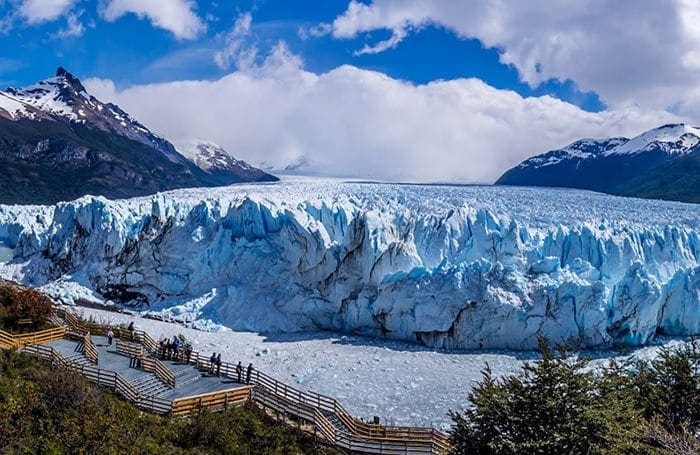

The main attraction of Calafate is without a doubt the Perito Moreno Glacier, inside the southern part of Parque Nacional Los Glaciares. While most of the glaciers in the world are receding, Perito Moreno Glacier is one of the few that is still considered to be in “good health,” and one of the largest that is easily accessible for viewing. Steel catwalks are set up so you can admire it safely from only a few meters away. The glacier is described by some as being almost “alive”, with ice calving occurring all year round. Seeing and hearing massive ice chunks crashing down into the lake is a mesmerizing phenomenon that you certainly don’t get to see every day.
Tips: If you have the time, budget, and physical fitness, definitely consider going on a glacier trek. Walking on a massive ice plain surrounded by the captivating icy landscape makes for an unforgettable and unique travel experience.
Bariloche


While Bariloche is known to be the place to go skiing in Argentina, it’s actually perfect to visit in any season. You can spy high, towering mountains with icy tips from afar, as well as peaceful mirror-like blue lakes and lush green landscapes, all in one spectacular view. The mountains, which are ideal for skiing and snowboarding, are also great for hiking, motorbiking, 4×4 riding, and horseback riding during the warmer months. The lakes provide ample opportunities for kayaking, canoeing and fishing.
Furthermore, Bariloche is also considered to be chocolate capital of Argentina. The area’s innumerable chocolatiers, each of which carry hundreds of their own sweet creations, may prove to be inescapable for tourists with a sweet tooth.
Tips: Don’t just stay in San Carlos de Bariloche. Travel around to nearby towns, such as Villa La Angostura and San Martín de los Andes, or even rent a car and spend a day driving through the Ruta de Los Siete Lagos (7 Lakes route). You will find so much breathtaking scenery that your friends back home will be convinced that your photos have been photoshopped.
If you have time, take the ferry and visit El Bosque in the Parque Nacional Los Arrayanes. It’s believed that its forests of arrayánes (myrtus shrubs) were the inspiration for the forest backdrop in the Disney movie Bambi.
Ushuaia


Ushuaia is the southernmost city in world, which is reflected in its motto, “Ushuaia, fin del mundo, principio de todo” (“Ushuaia, end of the world, beginning of everything”). The capital of Argentina’s Tierra del Fuego Province, Ushuaia is the perfect destination for the restless traveller. Among all the winter activities like skiing and snowboarding, and warmer weather activities such as penguin watching, hiking, canoeing and fly fishing, the most unique has to be taking a cruise trip to Antarctica. The season for this once-in-a-lifetime adventure is from mid-October to mid-March. However, trips in smaller boats to see wonderful island scenery and wildlife nearer to Ushuaia are available all year round.
Another not-to-be-missed activity is the End of the World Train, which passes through various historical point of interest and into Tierra del Fuego National Park, where you can explore the Park’s eco-environment.
Tips: If you are visiting during the winter months and have a taste for unique thrills, then consider a dog sledding excursion, where you can take in the area’s natural wonders from the vantage of a sled towed by Siberian and Alaskan huskies.
If you would like to learn more about Argentina visit our Spanish School in Argentina website.




